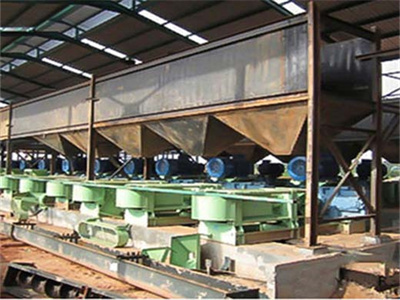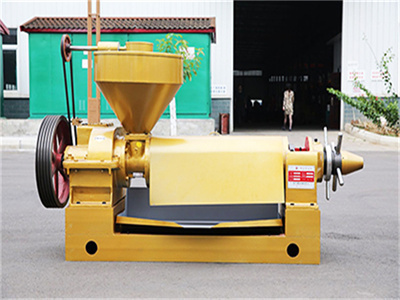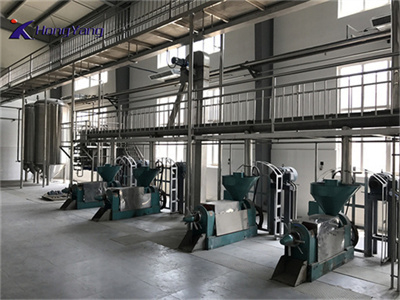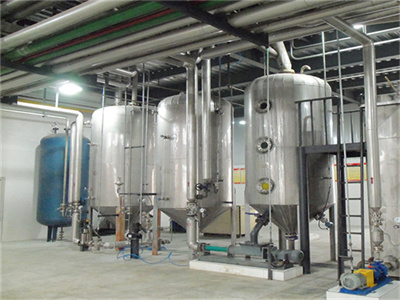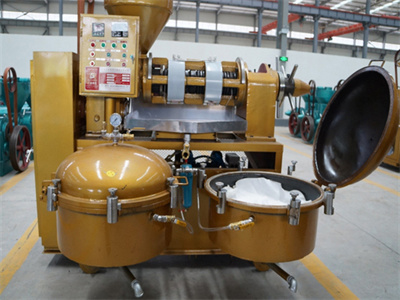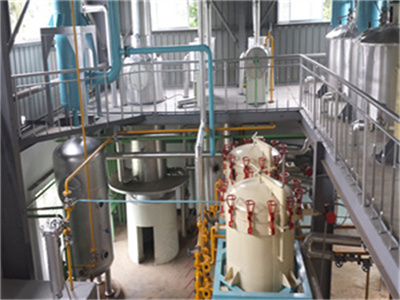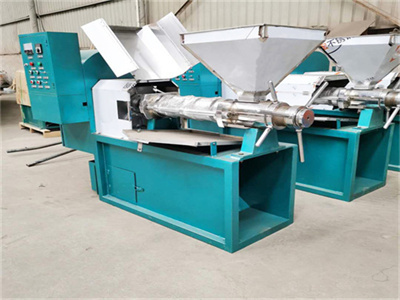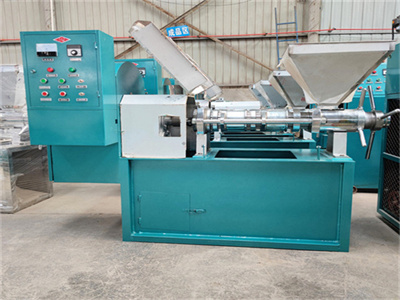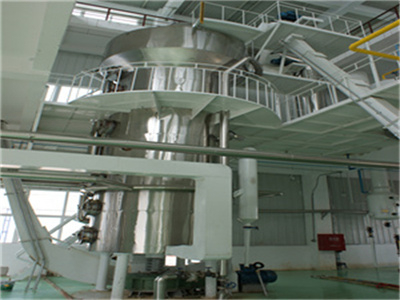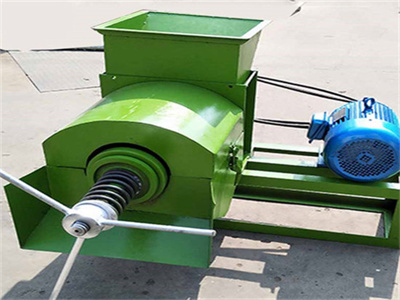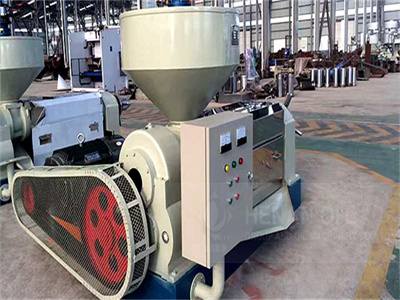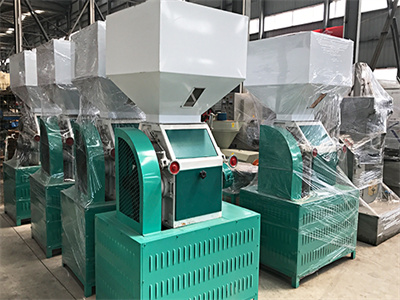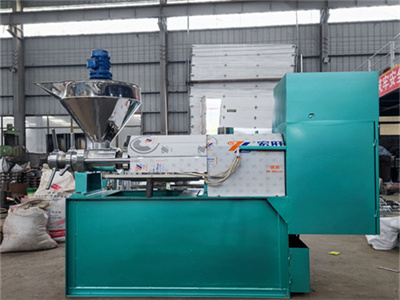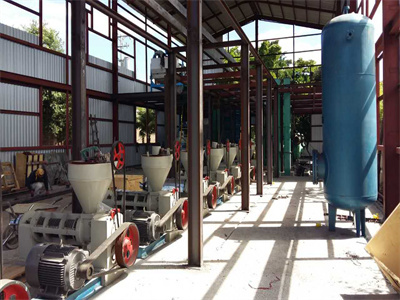abuja pdf a zero discharge treatment system of palm oil press mill
- Applicable Industries:Food Shop
- After-sales Service:Engineer's on-site guidance
- Dimension (L*W*H):1900*670*830mm
- Production capacity:20-100 ton per day
- Voltage:220V/380V
- Weight:1600 kg
- Power:5kw
- Advantage:Automatic
- Raw material range:sesame,avocado,flaxseed,sesame,castor
- Transport Package: Wooden Case Packaging
- Color:Customer Required

pdf tertiary treatment of biologically treated palm oil mill
crude palm oil (cpo) production in 2011 increased by 11.3% to reach a record of 18.91 million tons , which produced 30 million tons of palm oil mill effluent (pome) (tengku et al., 2012). palm oil processing is carried out in palm oil mill, where oil is extracted from a palm oil fruit bunch, and about 50% of the waste that results is pome. get.

a zero discharge treatment system of palm oil mill effluent
plication on zero discharge treatment system of palm oil mill effluent (pome) was filed by mpob and ronser on 11 may 2012 (pct ap-plication no. pct/my2012/000100). mpob has granted ronser to commercialise and market the technology. figure 2. zero effluent discharge pilot plant, labu, negeri sembilan.

(pdf) zero discharge treatment technology of palm oil mill
palm oil mill discharge raw effluent with high biochemical oxygen demand (bod) of about 25 000 mg o2/dm 3. conventional effluent treatment system uses ponds with a long hydraulic retention time.

wo2013169091a1 zero discharge treatment system of palm
the present invention relates to establishment of a zero discharge treatment technology of pome mainly routed in (1) pre-treatment, (2) biological treatment and (3) membrane separation. the ultimate goals of the developed zero discharge pome treatment technology are: (1) produce biogas as a source of renewable energy, (2) zero emissions of pome into the atmosphere, (3) final discharge of bod.

(pdf) palm oil mill effluent (pome)
palm oil mill effluent treatment through zero-discharge technology a rapidly growing technology for use in pome processing is a zero discharge membrane separation technology.

zero discharge treatment technology of palm oil mill effluent
treatment system and lastly a series of ultra filtration (uf) and reverse osmosis (ro) used for reclamation. figure 1. an integrated biological treatment process for the palm oil mill effluent (pome). pre-treatment biological treatment membrane separation compound fertiliser for oil palm plantation excess potash fertiliser for palm plantation

an integrated anaerobic-aerobic treatment of palm oil mill
figure 2. process flow of the zero discharge treatment technology of palm oil mill effluent (pome). figure 1. the pilot plant of zero discharge treatment technology of palm oil mill effluent (pome). oil/water eq tank dosing tank separator rotary screen raw pome anaeg® ‘nano’ air floatation cod: 75 000 ppm bod: 75 000 ppm ss: 18 000 ppm

services
pome (palm oil mill effluent) treatment plants. we are the first to develop innovative, proven state of art technology “zphb™” (zero pond™, zero pollution™ higher biogas™). this system is widely used for pome against the conventional systems. the conventional system consists of series of ponds which are uncovered open ponds.

zero discharge performance of an industrial pilot-scale
palm oil is one of the most important agroindustries. huge quantities of palm oil mill effluent (pome) pose a great threat to aqueous environment due to its very high cod. to make full use of discharged wastes, the integrated “zero discharge” pilot-scale industrial plant comprising “pretreatment-anaerobic and aerobic process-membrane separation&x201d; was continuously.

pollution control: how feasible is zero discharge concepts
difficult waste to manage. the results also shows that, palm oil mill cannot meet up with the new discharge limits of 20ppm of bod and zero emission using only conventional open or closed pounding system. keywords: anaerobic digestion, biogas, palm oil mill, palm oil mill effluent, zero discharge concept i. introduction

current situation and issues of industrial wastewater
zero discharge of palm oil waste genting jambongan oil mill, sabah, 1 st zero discharge oil mill inclusion of a compost plant that utilises all of its waste and by-products (shredded efb, decanter slurry and effluent) from the mill and convert them into biofertiliser

zero discharge performance of an industrial pilot-scale
an innovative approach towards zero-effluent discharge or zero-emissions would enable problem-free mill operation. the main objective is to recover usable materials such as water and oil from the effluent and to minimize the waste generation along the recovery of valuable nutrients from treated sludge which can be reused as biofertilizer.

zero discharge composting of palm oil mill wastes
handling the mill wastes. if all the liquid wastes of the palm oil mill can be utilised in the compost plant, then the mill owner can operate the mill without the conventional pome treatment ponds. table 1: amount of wastes produced by palm oil mill mill wastes conventional mill mill with eco-d system eco-d system cont. steriliser

(pdf) conventional and advanced treatment technologies
palm oil mill final discharge treatment by a continuous adsorption system using oil palm kernel shel... august 2020 · journal of water process engineering z. nahrul hayawin

zero waste technology for palm oil mill free
bles the mill to do away the secondary treatment using its usual ponding system and also the tertiary treatment plant (polishing plant), hence no land irrigation or watercourse discharge of the treated effluent is required. through the com-plete elimination of effluent discharge from the palm oil mill, this technology can effectively stop

treatment division
palm oil mill effluent (pome) tertiary/polishing treatment plant . researcher: pn. noorshamsiana abd. wahab / cik nor faizah jailani . under 10thn plan (rmk-10) budget, an integrated system of palm oil mill effluent (pome) tertiary pilot plant was setup with the objective to comply with the 20 ppm bod of the final discharge.

an integrated method for palm oil mill effluent (pome
the present pilot study relates to establishment of a zero discharge pome treatment technology with three units (1) pre-treatment (recovery of waste oil from pome), (2) biological treatment (to produce biogas from pome and generate final discharge of bod 20 mg/l or below) and (3) membrane separation (wastewater reuse or recycling).

improving our wastewater treatment systems sime darby
palm oil mill effluent (pome) is the major organic waste source in the plantation division in 2013 alone, our palm oil mill produced almost 3 million tonnes of pome, of which a portion was treated at our composting plants, and the remaining through traditional treatment systems.

treatment of effluents from palm oil mill process
a treatment system for zero emission of palm oil mill effluent was proposed. the final treated wastewater was similar to the quality of river water. the final treated wastewater can be recycled instead of being discharged.

effect of different chemical treatments on the
discharge standards of 100 mg/l, set by the department of environment for the palm oil industry, before discharge to watercourses. this represents a 300-fold reduction of the organic strength. this fact, coupled with the large daily volumetric throughput involved, means that the treatment system has to cope with a very high

